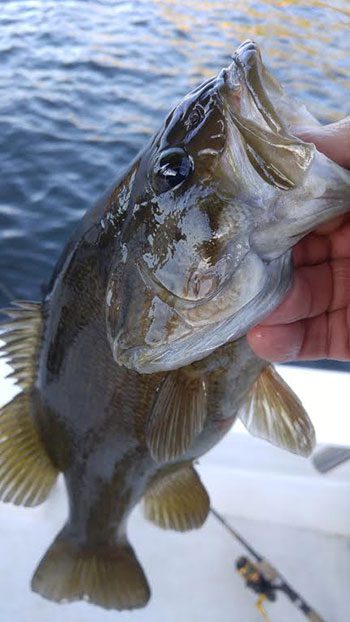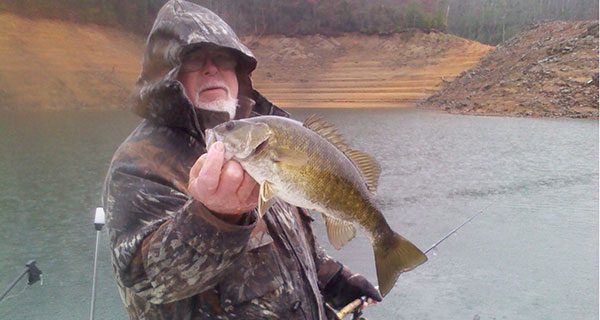With only a few football games left to go, deer season winding down, and snow (maybe) piling up, there should be more time to devote to our “fishy friends”. While snow and cold make work almost impossible, modern fabrics have made winter fishing and outdoor activities almost comfortable, or the very least, bearable.
Smallmouth have always seemed more accessible in cold weather. I know they are the earliest bass to spawn, but they also seem hungrier with nasty weather. Larger members are most affected, so if a really big smallie is on your hit list, now is the time for that biggun. Topwater plugs, and especially jerkbaits like the x-raps from Rapala or hair jigs, have been my favorite enticers. Most fish will be on the banks, so anything that can be thrown will be in their radar zone. I tie a deer hair jig with white bucktail under a dark shoulder wrap and just a few sprigs of flashabou or tinsel and, for some reason, I have caught many more big smallies on that jig than almost any other plug, spinnerbait, or even live bait. If they won’t hit your topwater plug or jerkbait, try throwing a jig right to the bank and walk it down to as deep as 60 feet. Most fish will be at 40 to 45 feet but don’t ever assume they won’t head for the deep side during adverse fronts or cold snaps. I have found them as deep as 100 feet, but that’s unusual, so just let your electronics show you where they are most comfortable. Another place to look is in the backs of creek openings suspended maybe a quarter out from the very back. Slowly motoring in may expose these schools which can be very large at times, with 40 to 50 fish in a school, and with that many fish, there is enough competition to get them to bite without much hesitation. Mouse Branch, Greasy Branch, Gold Mine and Forney come to mind as some of my favorite places. Most of the creeks towards the dam like Pilkey, Eagle, and Hazel also hold good schools at times. Fontana, like every other local lake, has spotted bass so, in order to help our smallie friends take the spots to eat and encourage them to return all the smallmouth, they need the help. I think the spots taste better anyway.

Well, take care, dress warm, and in layers, let folks know where and when you will be fishing, and slip out to get that one time trophy. Alert the wildlife folks if you see anything that looks suspicious and enjoy one of God’s greatest gifts, our beautiful, bountiful mountain lakes. Later, Capt. James
Capt. James McManus is the Owner of 153 Charters. Give him a call for a great day of boat fishing!
